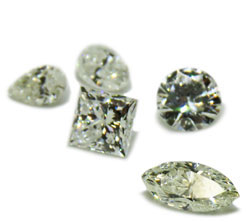809 Main |
Vancouver, WA 98660 |
360.693.9940


809 Main |
Vancouver, WA 98660 |
360.693.9940


Emerald is the birthstone for May

The word “emerald” comes from smaragdos, ancient Greek for a green gem. Despite being naturally heavily included, emeralds have mesmerized us throughout the ages and were mined in Egypt as early as 330 B.C. From Egyptian pharaohs to Inca emperors, emeralds have enchanted royalty. Cleopatra was known to have a passion for emeralds and used them in her royal adornments. Today the color green is known to relieve stress and eye strain, something that Roman author Pliny the Elder, who died in the 79 CE eruption of Mt. Vesuvius, discovered millennia ago. He said that early lapidaries (cutters, polishers, or engravers of precious stones) “Have no better method of restoring their eyes than by looking at the emerald, its soft, green color comforting and removing their weariness and lassitude.”
Colombia has been the source of the finest emeralds for more than 500 years, and Colombian Emeralds are the standard by which all others are measured. Like aquamarine and morganite, emeralds are comprised of the mineral beryl and are considered the most valuable of the beryl gemstones. To increase clarity and enhance their beauty, natural emeralds are almost always treated with oil or resin. Though the availability of natural high-quality emeralds are limited, synthetic emeralds, produced in a lab but sharing virtually all chemical, optical, and physical characteristics of natural emeralds, are readily available. Though much less valuable, synthetic emeralds often outshine their natural counterparts in clarity and color.
The emerald has always been seen as a symbol of fidelity. During the Middle Ages it was believed that it would keep a woman chaste. Not surprisingly, the same was not believed to be true for a man. The Roman magician Damigeron stated in the second century BC that an emerald “influences every kind of business, and if you remain chaste while you wear it, it adds substance to both the body and the speech.” In various languages, it was also stated that emeralds enable people to foretell future events if put on the tongue or worn on the left side of the body. Alternatively an emerald worn on a finger was supposed to burn at the approach of poison and to liquefy the eyes of snakes that looked at it, while emeralds worn as amulets were used to ward off epilepsy in children and it was believed the stone would shatter if it could not overcome a violent seizure. Emeralds were also believed to reveal what was true or false and was said to be a sure antidote for enchantments and spells.

